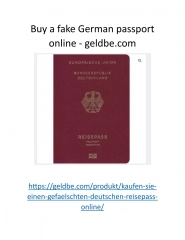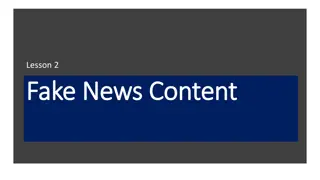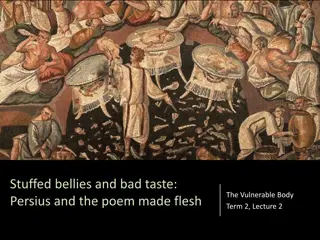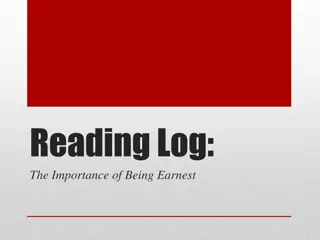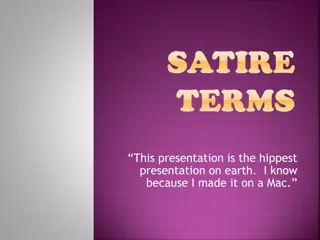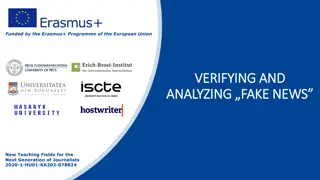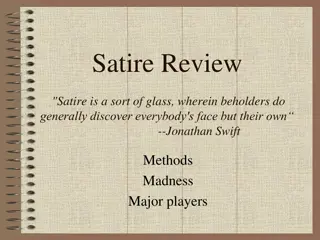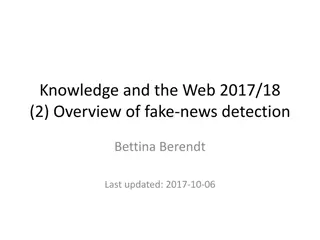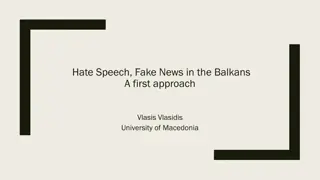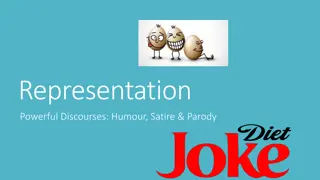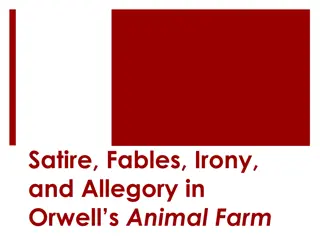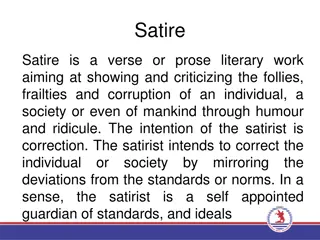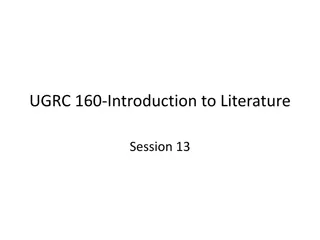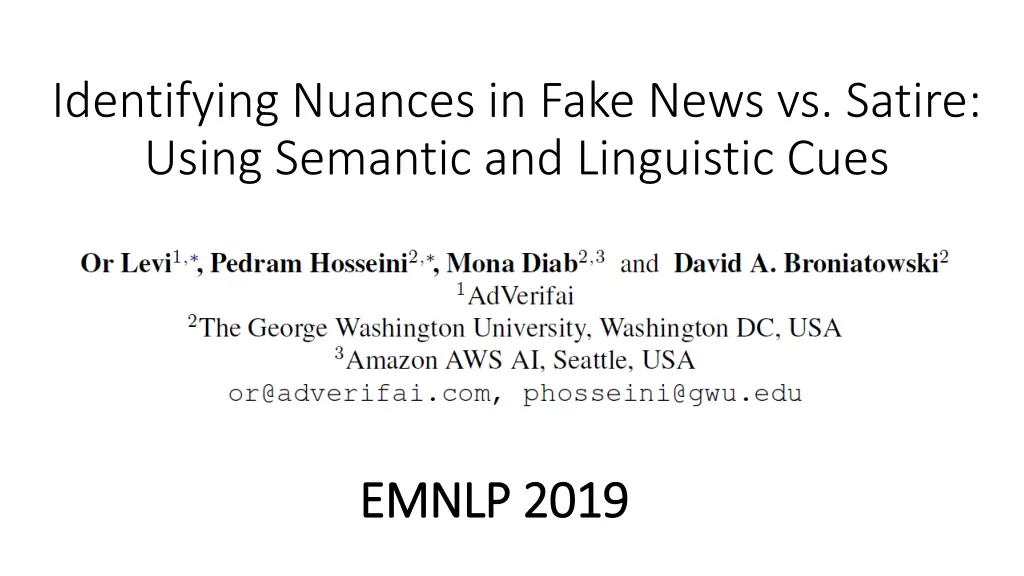
Identifying Nuances in Fake News vs. Satire: Semantic and Linguistic Cues
Dive into the challenges of distinguishing between fake news and satire on social media platforms. Explore the research questions, methods, and results of identifying semantic and linguistic differences to differentiate these types of content beyond just language usage.
Download Presentation

Please find below an Image/Link to download the presentation.
The content on the website is provided AS IS for your information and personal use only. It may not be sold, licensed, or shared on other websites without obtaining consent from the author. If you encounter any issues during the download, it is possible that the publisher has removed the file from their server.
You are allowed to download the files provided on this website for personal or commercial use, subject to the condition that they are used lawfully. All files are the property of their respective owners.
The content on the website is provided AS IS for your information and personal use only. It may not be sold, licensed, or shared on other websites without obtaining consent from the author.
E N D
Presentation Transcript
Identifying Nuances in Fake News vs. Satire: Using Semantic and Linguistic Cues EMNLP 2019 EMNLP 2019
Satire vs. Fake News The blurry line between nefarious fake news and protected-speech satire has been a notorious struggle for social media platforms. A fake news site, carrying a satire disclaimer Further to the efforts of reducing exposure to misinformation on social media, purveyors of fake news have begun to masquerade as satire sites to avoid being demoted.
Satire vs. Fake News Our main research questions: RQ1) are there semantic and linguistic differences between fake news and satire stories that can help to tell them apart? RQ2) can these semantic and linguistic differences contribute to the understanding of nuances between fake news and satire beyond differences in the language being used?
Satire vs. Fake News Our method - we developed 2 classifiers: 2) Linguistic features based on textual coherence metrics 1) Semantic representation, with a state- of-the-art contextual language model
Satire vs. Fake News Results: our methods vs. the baseline -- Fake News vs Satire: A Dataset and Analysis (Golbeck et al. 2018)
Satire vs. Fake News Main Results. Significant components of our logistic regression using the Coh-Metrix features Among the significant features, we observe the causal connectives, that are proven to be important in text comprehension, and two indices related to the text readability, both suggesting that satire articles are more sophisticated, or less easy to read, than fake news articles


